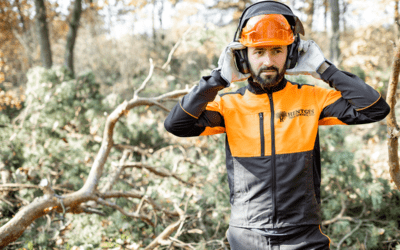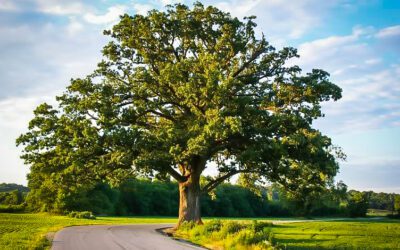Our arborists often get asked this question: “When should we have our trees trimmed or pruned?” Unfortunately, this answer is not always as straightforward as you might expect and varies based on a number of factors. Variables such as the tree species and whether the tree is an ornamental, shade or fruit tree, combined with the time of year, current weather conditions, and your goals of the pruning all make giving a single answer nearly impossible. That said, there is conventional wisdom and research which can help guide your decisions.
If you suspect the tree is diseased, has dead or visibly broken limbs, these issues should be addressed right away. Ask a certified arborist to inspect damage as soon as possible so that the tree can receive proper care and danger can be mitigated.
You may think that fall is the best time to prune. In fall and winter, trees enter a dormant stage, halting their growth. The lack of leaves after autumn allows you to easily identify branches and limbs requiring removal. However, while this is a perfect time to inspect your tree, you may want to think twice before pruning all of your trees in fall.
In general, research shows that the best time to prune a live limb from a tree is when the tree is actively growing. Most trees will benefit from pruning just before spring blooms emerge in late winter to early spring. In doing so, the tree has the maximum time available to close the wound before again going dormant. Pruning during this time also encourages new growth as soon as the weather begins to warm. If you prune after new growth has started, you can limit the plant’s bloom potential for the year.
Be aware that some trees can bleed sap when pruned during late winter. For example, pruning maple trees in winter is ideal but can result in bleeding. Don’t worry – the sap will stop flowing as soon as the tree begins to put on leaves. Bleeding is a natural process and won’t harm your tree.
Now, let’s talk about flowering trees as they don’t exactly follow the rules. Flowering trees fall into two categories: early bloomers and late bloomers. Early blooming trees, such as ornamental cherry, flowering plum and magnolia trees, set buds on last year’s growth. For example, a tree blooming early in 2020 is blooming on growth from 2019. If you prune over the winter, your tree won’t bloom. Instead, prune right after the tree finishes blooming. On the other hand, trees that bloom in late spring to early summer, such as a dogwood, set buds on this year’s new growth and should be pruned in early spring for the best bloom.
Remember, there really is no one “perfect” time to prune every tree and a certified arborist can help you determine the best time to schedule pruning your trees.
WANT MORE DETAILS ON YOUR TREE PRUNING SCENARIO?
Contact Hentges Tree Service for a FREE consultation today.



